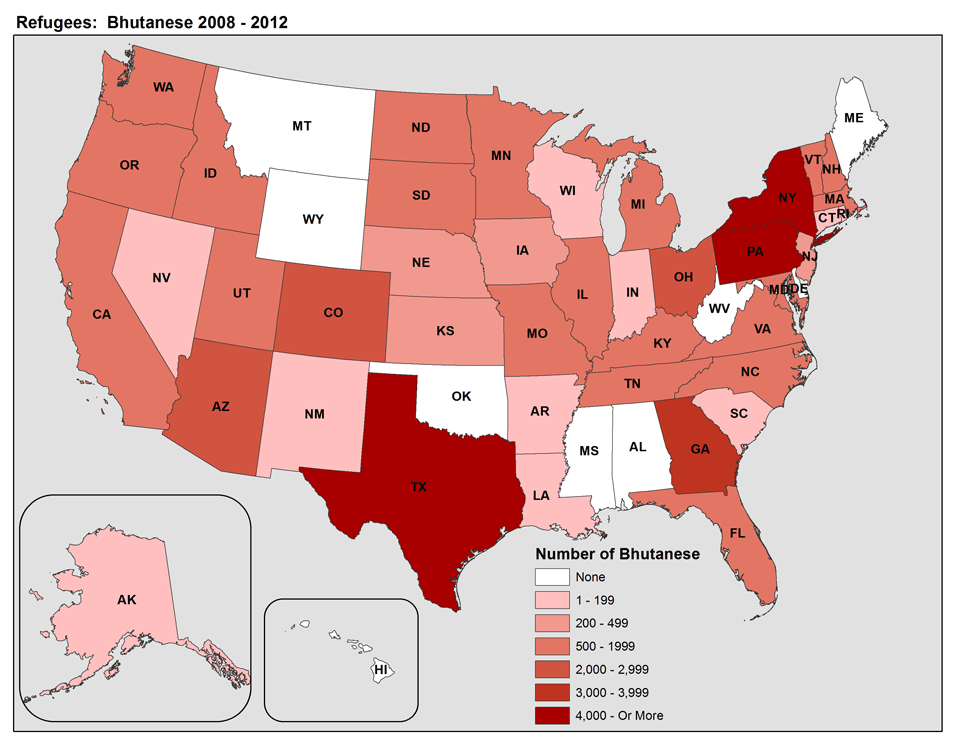…..and they are not done!
The US has taken 75,000 of those and more are on the way.
The UN and the International Organization for Migration say that 21,000 more have expressed interest in coming to your city.
The Bhutanese are really from Nepal originally and were sent packing from Bhutan when that country wanted to keep Bhutan for its own people. Nepal didn’t want its people back, so what the heck, we lined up to take them. And, readers, remember! it was the Bush Administration that opened the pipeline. Bush said 60,000 (of the 100,000) over five years was our limit!
Before we get to the short news story, please look at this map of the camps in Nepal.
When you tally up the number of residents in each camp in 2007 the total number comes to 107,700, yet this article tells us that the total number (resettled 90,000 and waiting 27,000) is closer to 10,000 more. Either they were cranking out babies or other “refugees” (having heard the good news) have come to the camps since 2007 looking for a ticket out!

Here is The Himalayan (90‚000 refugees from Bhutan resettled: IOM)
The resettlement of the Bhutanese refugees began in 2007. So far, over 5,800 refugees from Bhutan have been resettled in several communities across Canada, including Charlottetown, Saint-Jérôme, Quebec City, Ottawa, Toronto, Vancouver, among others. The other resettlement countries are Australia, Denmark, the Netherlands, New Zealand, Norway, the United Kingdom, and the United States. The majority of resettled refugees – over 75,000 – have been taken in by the United States, the statement read.
“This is another important step towards resolving one of the most protracted refugee situations in Asia. This has been possible due to the strong support of the Government of Nepal and the excellent cooperation between the resettlement countries, UNHCR and IOM….. [LOL! I bet there was strong support from Nepal—they didn’t want their people back. But, I still wonder why that was our (US) concern? Cheap labor?—ed]
[….]
According to IOM, of the 27,000 refugees remaining in the camps, about 21,000 have already expressed an interest in resettlement and are expected to depart in the coming years.
What is the lesson here? Don’t believe the US State Department the next time they say we are only taking ____ refugees. For example, once the doors are opened wide to Syrians there will be no end in sight!
Click here for our extensive Bhutanese refugee archive.




